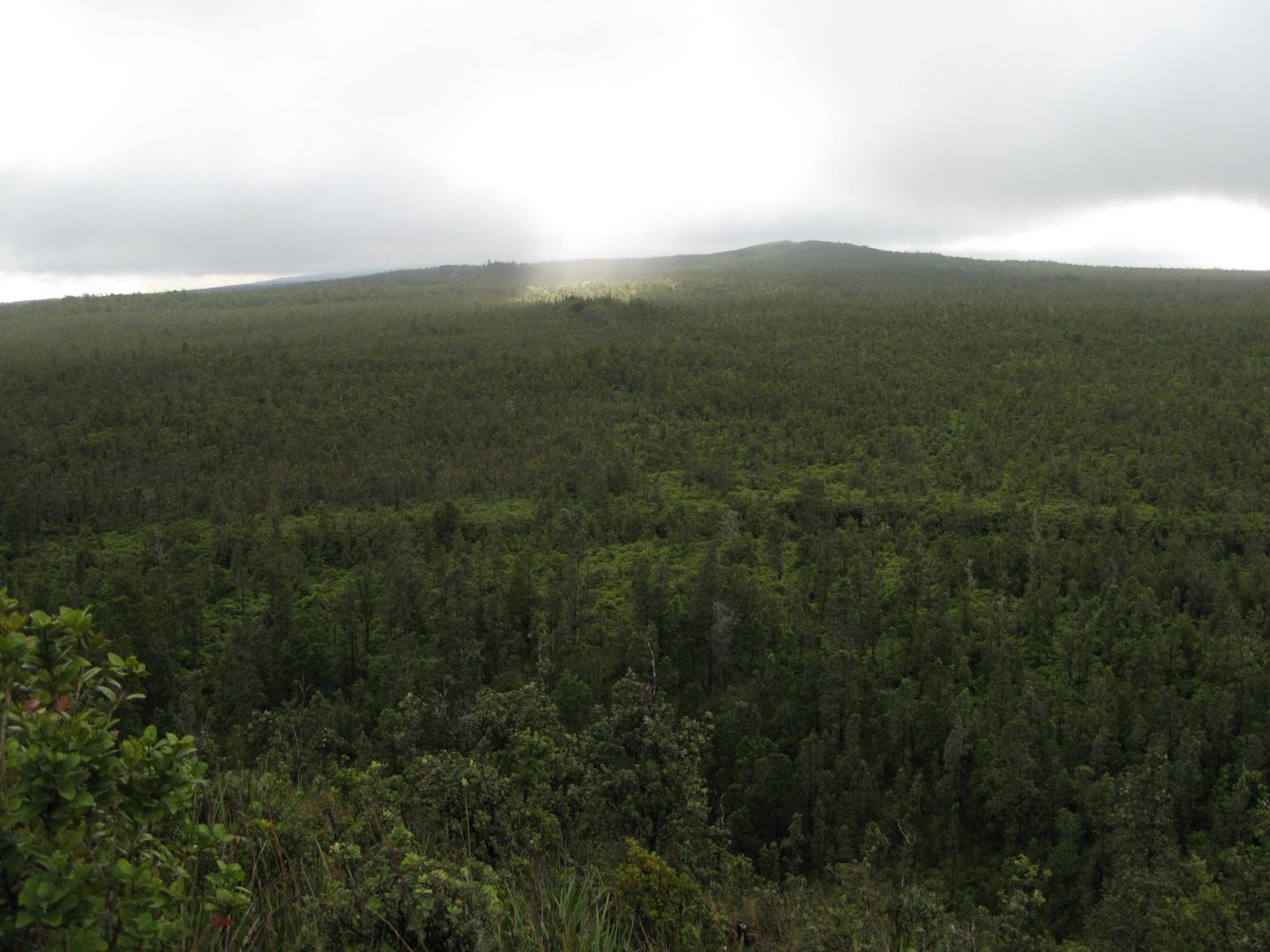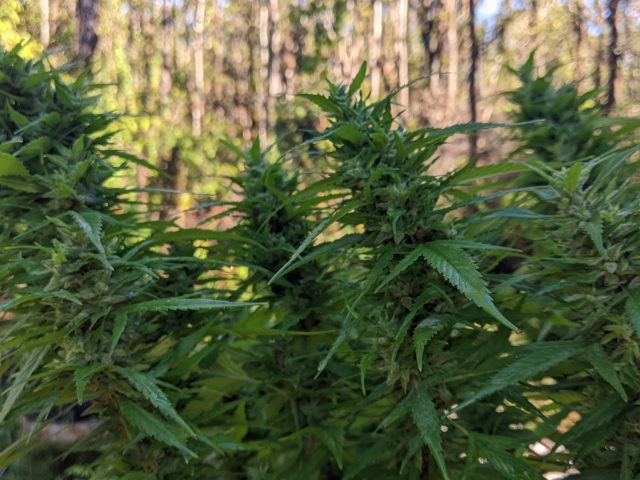The Treehouse Farm is adjacent to the Office of Hawaiian Affairs (OHA) controlled Wao Kele O Puna property. Soils in this area are basalt. Basalt rocks in the area of the Treehouse are a result of heating and cooling lava. The lava fields have long since been covered by native Ohia forests and their decomposition over periods of time ranging from 1 year to 2,500 years in the area.
We are interested in the communication channels and relationships between Rhizophagus irregularis (mycorrhizae), indigenous microorganisms and other cannabis-beneficial organisms found in our local terroirs. As we learn more about these relationships we can more carefully consider the resulting diversity of cannabis compounds resulting from our terroirs and larger Puna appellation(s).
“About 1/4 of all the medicines we use come from rainforest plants. Curare comes from a tropical vine, and is used as an anesthetic and to relax muscles during surgery. Quinine, from the cinchona tree, is used to treat malaria. A person with lymphocytic leukemia has a 99% chance that the disease will go into remission because of the rosy periwinkle. More than 1,400 varieties of tropical plants are thought to be potential cures for cancer. All tropical rain forests resemble one another in some ways. Many of the trees have straight trunks that don’t branch out for 100 feet or more. There is no sense in growing branches below the canopy where there is little light. The majority of the trees have smooth, thin bark because there is no need to protect the them from water loss and freezing temperatures. It also makes it difficult for epiphytes and plant parasites to get a hold on the trunks. The bark of different species is so similar that it is difficult to identify a tree by its bark. Many trees can only be identified by their flowers.” https://www.blueplanetbiomes.org/rainforest.php
Wao Kele o Puna is a 25,856-acre property. For OHA, the property reflects the weighted importance of ʻāina and its connection to Native Hawaiian culture and people. OHA’s acquisition of Wao Kele o Puna provides an opportunity for OHA to contribute to the protection of Hawaiʻi’s natural and cultural resources through the lens of Hawaiian culture and practice.
Wao O Kele Location
Ahupuaʻa of Waiakahiula, Kaʻohe
Moku o Puna
Mokupuni o Hawaiʻi
Puna district, island of Hawai‘i
Acquired: 2006
Size: 25,856 acres
Zoning: Conservation. State forest reserve protective subzone
Cost to OHA: $250,000. Federal Forest Legacy Program paid the balance of the $3.65 million purchase price
Tenure and use: Owned fee simple
Acquisition objectives:
- Protect natural and cultural resources
- Protect traditional and customary rights of Native Hawaiians on the parcels
Features:
- Forest Reserve; Puna Rainforest
- One of few remaining tracts of lowland rainforest in the State of Hawaiʻi
- Many benefits to surrounding lands and communities of Puna (watershed recharge, native plant seed bank for Kīlauea volcano, endangered species habitat, forest resources for gathering and cultural practices)
- Sacred place for Native Hawaiians – part of the home of the Goddess Pele and her equally powerful Sister Hiiaka
Comprehensive Management Plan Complete
Since the beginning of 2016, OHA worked with its contractor, Forest Solutions Inc., and a number of subcontractors, to draft a Comprehensive Management Plan (CMP) for Wao Kele o Puna, a 25,856-acre property that OHA owns on Hawaiʻi Island. A substantial component to the planning process has been community engagement, which was conducted through ethnohistorical interviews, a community advisory council, called the ‘Aha Kūkākūkā, and two public meeting.
On July 6, 2017, OHA held a public meeting at the Kamehameha Schools Keaʻau Campus to present the Draft Comprehensive Management Plan. Mahalo to David Corrigan of Big Island Video News for recording the presentation, which is available for viewing below. OHA’s Board of Trustees approved the Final CMP in August 2017 and OHA staff has since begun implementation.
E Nihi ka Helena i ka Uka o Puna – An Ethnohistorical Study of Wao Kele o Puna
Wao Kele o Puna Final Comprehensive Management Plan – 2017

